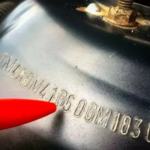The fact that the putty is the building material, everyone knows, but how to use it correctly, and the types of putty, only specialists know, or people who are a little versed in repair and construction work. To align the surfaces, starting level or finish, you need this building material.
Putty can be sold both in a dry state and ready for work. Dry putty is poured into paper bags, and has a powder look. In order for putty to be used, it is diluted with water and thoroughly stirred to the desired state. The finished putty just needs to be thoroughly stirred, you don’t need to add anything to it.
The putty has several types: a) gypsum putty, it is used before painting, has white color. The material is suitable for sealing deep cracks, but in rooms with high humidity is not suitable for use. b) oil putty, slowly dries, but high strength allows for use by oil types of paints. c) cement putty, perfect for rooms with high humidity. Used for finishing work on brick and concrete.
The high quality of the material is characterized by putty Bolars, which makes all types of putty, both listed and others. Putty, which are made on the basis of PVA is best suited for rooms with high humidity. Putty serves as an excellent protection against mold and fungus. For external types of work, an acrylic based facade putty is used. And the last type of putty: universal. It is used for internal finishing work on any material. It lends itself well, grinds, levels. When buying the material, you need to pay attention to the package, the type of material is indicated there.






